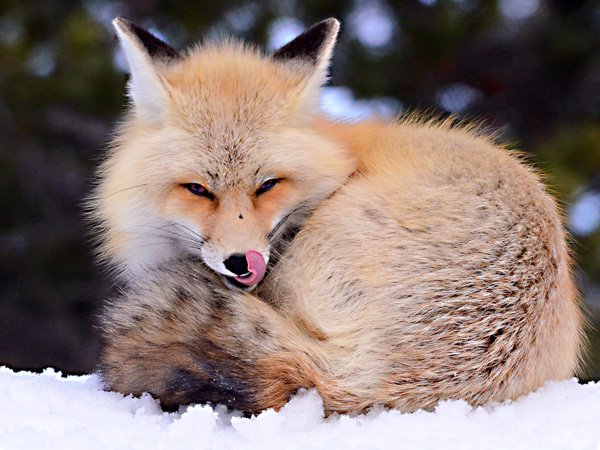(单词翻译:单击)
听力文本
This is Scientific American — 60-Second Science. I'm Steve Mirsky.
Want to make a dog? Well, wolves evolved into dogs at least once. But it turns out you can also make what's basically a dog by starting with wild foxes. Select the ones that do not seem to want to tear the researcher's face off and mate them to produce the next generation.
"Within five or six generations of this selecting the calmest animals, they had animals that were wagging their tails when Lyudmila would approach them, that were licking her hand when she put it into the cage."
University of Louisville evolutionary biologist Lee Dugatkin, talking about Lyudmila Trut of the Institute of Cytology and Genetics in Siberia.
"And this is strictly as a result of genetic selection. These animals are not trained to do this, they don't learn, there's no mechanism in the experiment for them to learn anything, what you're looking at is the result of genetic selection."

Trut started this fox domestication experiment in the late 1950s at the age of 25 and is still running it today. She and her team are approaching their 60th generation of foxes. But they saw profound changes early on.
"Within five generations of selection they had these animals that were extraordinarily docile towards humans. And then slowly but surely, so many of the other traits that we see in domesticated animals, also began to appear in these tame foxes...they tend to have floppy ears and curly tails and they tend to have much more juvenalized facial characteristics."
Trut and Dugatkin are the co-authors of the new book How to Tame a Fox (and Build a Dog) about this long-term study. They also wrote an article about the fox experiment in the May issue of Scientific American. An in-depth discussion with Dugatkin is available as a Science Talk podcast on our Web site.
Thanks for listening for Scientific American — 60-Second Science Science. I'm Steve Mirsky.
参考译文
这里是科学美国人——60秒科学。我是史蒂夫·米尔斯基。
想要“制造”狗吗?狼至少有一次进化成了狗。但事实证明,你也可以让一只野生狐狸演变成“差不多的狗”。选择那些看起来不会把研究人员的脸扯掉的狐狸,让它们交配生出下一代。
“研究人员筛选出最温顺的狐狸,经过五六代繁育后,当柳德米拉接近时,它们会摇尾巴,而柳德米拉把手伸进笼子里时,这些狐狸会舔她的手。”
路易斯维尔大学的进化生物学家李·杜盖金谈到的是西伯利亚细胞学和遗传学研究所的柳德米拉·特鲁特。
“这是严格地基因选择的结果。这些动物并没有被训练来做出这些行为,它们也没有学习,实验中没有让它们学习的机制,你们所看到的是基因选择的结果。”
特鲁特在20世纪50年代晚期开始进行狐狸驯养计划,当时她25岁,现在这一实验仍然在继续进行。她和她的团队即将繁育出第60代狐狸。而他们在早期就看到了深刻的变化。
“经过五代的筛选,繁育出来的狐狸已经变得对人类很温顺。然后慢慢地,这些温顺的狐狸开始产生驯养动物的许多其它特征,它们倾向于耷拉着耳朵、卷曲着尾巴,而且面部特征也越来越年幼化。”
特鲁特和杜盖金合著了新书《如何驯服一只狐狸(并塑造一只狗)》,这本书介绍了这项长期研究。她们还写了一篇关于狐狸实验的文章,这篇文章发表在《科学美国人》5月刊上。我们和杜盖金的深入对话已在官网“科学对话”播客中上线。
谢谢大家收听科学美国人——60秒科学。我是史蒂夫·米尔斯基。
译文为可可英语翻译,未经授权请勿转载!
重点讲解
重点讲解:
1. at least (数量)至少,不少于;
例句:Aim to have at least half a pint of milk each day.
目标是每天至少喝半品脱的牛奶。
2. tear off (胡乱地)脱掉,扯下(衣服);
例句:Fuentes tore off his hat and flung it to the ground.
富恩特斯一把扯下帽子,扔在地上。
3. as a result of 结果;后果;成果;效果;
例句:Her hair started falling out as a result of radiation treatment.
由于放疗,她开始掉头发。
4. tend to do sth. 往往会;经常就;
例句:In older age groups women predominate because men tend to die younger.
在老年群体里女性占大多数,因为男性通常不易高寿。


